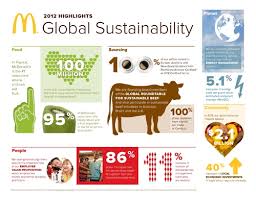This week we focused on content strategy. Can we truly understand and “see” or “feel” what the content is about on a specific ad? Content strategy helps us to better understand what the content is trying to portray or explain. The content, whether a standalone image or an infographic, to help tell the story, needs to answer questions such as who (audience), what (message), why (purpose) and even how (how portable is the content to “share”?).
I’ve selected three examples to summarize the elements of a content strategy and my reaction to their strengths and weaknesses:
Image #1:
 The Strengths in this map include colour coded for easier understanding, a side bar for legend information, clearly marked, focused and not crowded. The weaknesses however, is not having enough information of the actual main streets involved for a more clear division of schools. The Image would not work as well as a standalone image.
The Strengths in this map include colour coded for easier understanding, a side bar for legend information, clearly marked, focused and not crowded. The weaknesses however, is not having enough information of the actual main streets involved for a more clear division of schools. The Image would not work as well as a standalone image.
Image #2
 The strengths here would again be fact that the ad is nicely laid out, clear, crisp/focused and colourful. Although, it could be understood as a standalone image, it doesn’t give more of the important information such as serving sizes and age/gender specifics.
The strengths here would again be fact that the ad is nicely laid out, clear, crisp/focused and colourful. Although, it could be understood as a standalone image, it doesn’t give more of the important information such as serving sizes and age/gender specifics.
Image #3
 The strengths in this infographic would include: nice clear, colourful images, with words and percentages to help understand the focus from Mcdonald’s 2012 hightlights. I like how the ad is divided up and that they have pictures of real people to draw in the audience. This content would not work as a standalone image.
The strengths in this infographic would include: nice clear, colourful images, with words and percentages to help understand the focus from Mcdonald’s 2012 hightlights. I like how the ad is divided up and that they have pictures of real people to draw in the audience. This content would not work as a standalone image.
To summarize, content strategy must have a balance to it. It must be visually appealing to the eye and not just all words with no “relief”. Effective content strategy will make it easy, fast and pleasing for the audience to learn and understand what the content’s message is telling.
Thanks again for reading,
Good Night!